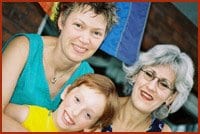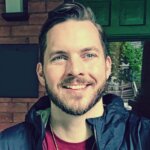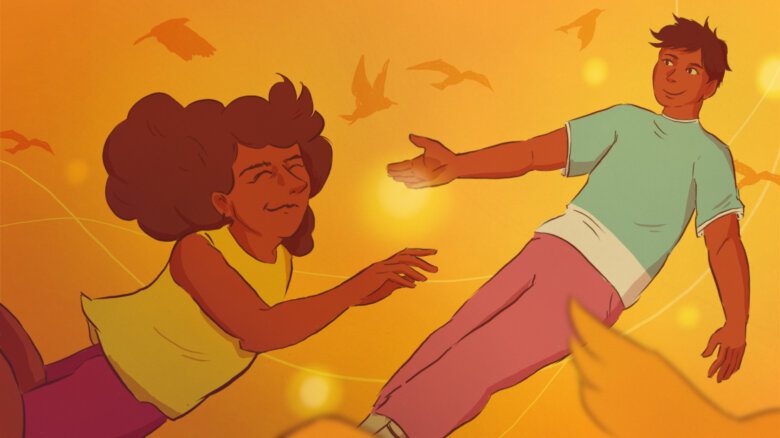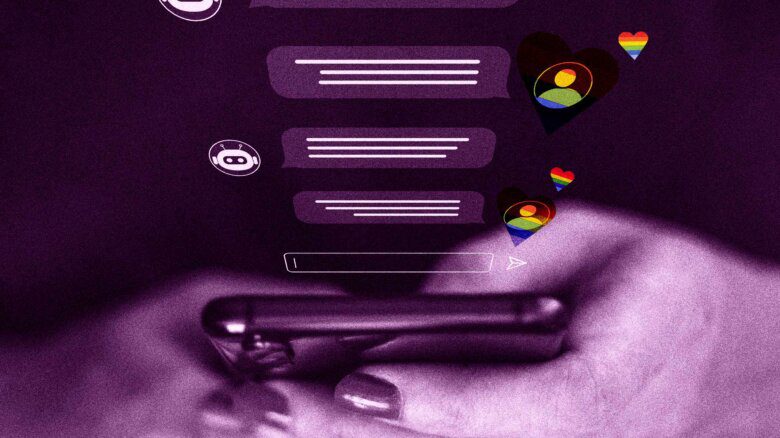Attempts by the Children’s Aid Society to reach out to Ottawa’s queer community were at first greeted with wary skepticism but now, with the help of a number of activists-turned-adoptive parents, CAS appears to be matching more children with homo households.
Longtime activist Marie Robertson and her partner Lucy Chapman began the process of adopting through CAS over four years ago. After they applied, they went through an exhaustive interview and training process. They were matched with a child in 2004.
Since Ana became their daughter three years ago, they’ve been mentoring other potential queer parents through informal kitchen table conversations and increasingly through CAS programs.
“We usually get a call from [CAS] saying ‘We’ve got a lesbian couple that’s interested in adopting; will you talk to them, can they come over?’ ” says Robertson.
They get a whole gauntlet of questions from queer parenting issues to negotiating the systems. But it’s not just referrals. Through her work with the Lesbian Information Xchange and other queer groups, she and Chapman have had dozens of informal chats about CAS, helping gays connect with the service.
“I think people should know about this,” says Chapman. “They’ve been a really fantastic success story.”
When Anik Dalby came to CAS six years ago, they were already facilitating adoptions for gay families — but not very many. Between CAS and parents like Chapman and Robertson, Ottawa queers are thawing to the public adoption agency.
“There was a lot of trust that needed to be built with the [queer] community itself so that the community could believe that it could adopt through us,” says Dalby. “My work has been concentrating a lot on building bridges and trust in the community, and advertising, for lack of a better word, that it is absolutely a possibility, that we are open, and that we do have children available.”
Dalby says she joined the Pride info fair in her first year to promote gay adoption through CAS — but she received a cool response. Historically, gays have often hidden their sexual orientation in order to apply for adoption. One half of a gay couple would apply as a single person, often having to pretend they weren’t in a relationship — meaning that only one partner would be recognized as a legal guardian. It’s a legacy most gays who adopt internationally still face.
“Now, the calls that I get are people saying that they have three friends who have adopted through us and they’d like to adopt as well. Whereas six years ago, when I went to Pride for the first time, I think about a hundred percent of the people were saying, ‘Well, you don’t want us, we’re gay.'”
Holly Wagg and her wife Julia Alarie adopted two children in January through CAS.
“We had talked together about a number of ways to start a family. We felt it was really important to adopt in the Ottawa area, to be able to give back to our community,” says Wagg.
The couple are cofounders of the Ten Oaks Project and former volunteers with the Rainbow Families Coalition. So when it came time to adopt, they already had the background info.
CAS doesn’t keep formal statistics on the rates of queer adoption because their files aren’t flagged as gay or straight, but at Wagg and Alarie’s training session, three out of the five adoptive parents were lesbians.
They had their own struggles — there isn’t a lot of literature written on the subject of queer parenting in a Canadian context for those adopting children over the age of six — but they say that CAS certainly wasn’t the barrier.
CAS was eager to help them connect with other queer parents, which meant that they accidentally referred Wagg and Alarie to their own organizations: Ten Oaks and Rainbow Families.
And when they were training, there was more proof that a small number of activists were still the flagbearers for queer adoption. At the panel discussion were two adoptive parents: Robertson and Chapman.
“Two of the three [lesbian] couples had already sat down with Marie and Lucy,” says Wagg with a laugh.
She says the adjustment has been as tough for her children, Robin (11) and Brandin (nine), as it would be for any other child being adopted at an older age. But overcoming any ideological baggage they received about queers before they joined the family has been an additional concern.
“They’re learning how to talk about it. I think that the biggest challenge adopting older children into a queer family is that they’re not growing up in it. They have to do a total cultural shift.”


 Why you can trust Xtra
Why you can trust Xtra


